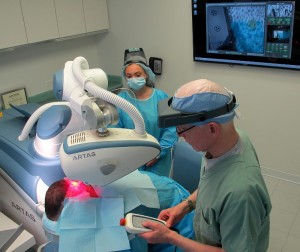Q: I thought that FUE extraction is performed in a way that it cannot be detected. Therefore, it is best to distribute the pattern evenly starting from the safe zone and fading out on the sides. The ARTAS results often show a smaller extraction area and harder edges (no transition from extraction to non-extraction area). Does this lead to a higher risk to detect the surgery? — H.K. ~ Chicago, I.L.
A: Feathering of the extraction zone in FUE is a technique where the distance between the extractions gradually increases as one reaches the border of the extracted zone. When this technique should be used depends upon the short- and long-term goals of the patient. If the patient’s main goal of the FUE procedure is to wear their hair very short, then the technique of feathering and rounding the edges to have a less distinct border is appropriate, as this will decrease the visibility of the harvested area.
However, if a person does not wear his hair very short (nor plans to) and maximizing the donor supply is paramount, then a more organized pattern, with less feathering, will give a greater long-term yield and a more even distribution. The reason is that the healing of FUE wounds distorts adjacent follicular units making subsequent extraction in the same regions more difficult and increases the risk of transection. For this reason, in subsequent procedures we generally prefer to harvest in new areas. If we need to harvest more hair from the same area, we rarely go back more than once.
When one feathers extensively in the donor area, this utilizes a larger surface area of the scalp with less graft yield, so it may become necessary to go back over the same area to obtain additional grafts, often multiple times. This risks increased transection and an uneven, mottled appearance to the donor area.
If a person wears his hair very short, then feathering is critical (even though it makes subsequent extraction more problematic). It is very easy to feather and round edges with the ARTAS robot, but we make the decision to do so based upon the specific needs and goals of the patient.






